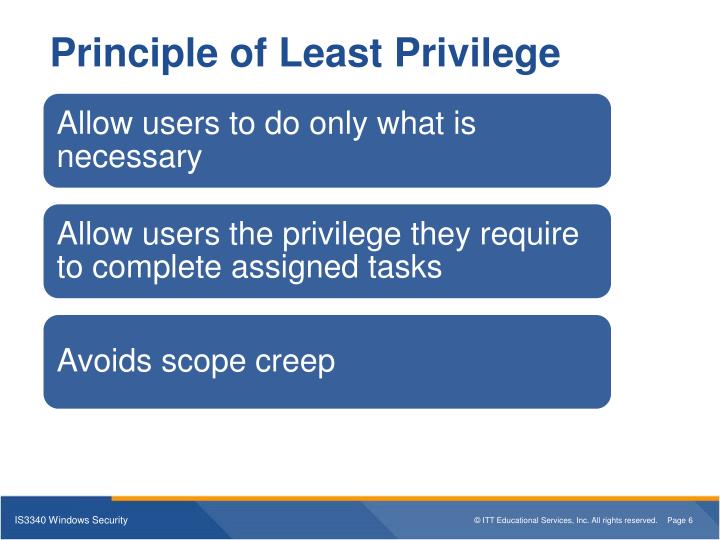

- Risk of not using principle of least privilege full#
- Risk of not using principle of least privilege software#
In computing, separation of privilege (SoP) is an important security principle. One way to do this is by implementing least privilege principles, which state that users should only be given the permissions they absolutely need to. Organizations need to be aware of the risks associated with privilege escalation and take steps to mitigate them. This helps to ensure that one part of the organization cannot impact the security of another part, even if they are compromised. Separation of privilege can also be applied at a higher level, such as separating different parts of the organization into distinct security domains. For this reason, it is important to have strict controls in place for how these accounts are used, and who has access to them. However, they also introduce a significant risk if they are not properly managed. Privileged accounts are a necessary evil in many organizations, as they allow administrators to perform actions that would otherwise be prohibited by the security controls. For example, a privileged account might be able to view and modify any file on the system, regardless of the file’s permissions. A privileged account is an account that has been given special permissions that allow it to bypass normal security controls. The separation of privilege principle can be applied in a variety of ways, but one common example is the use of privileged accounts.

You should only increase privilege rights as required for certain people to be able to perform their jobs. This means that different parts of the system can be run by different individuals who are trusted to do their jobs but not have access to other areas.įurthermore, separation of privilege is one of the key elements when implementing the Principle of Least Privilege (POLP), according to which all accounts should have the lowest level of privileges possible. Separation of privilege is the process of splitting up tasks, or assigning rights, to different parts of a system.

Now, take a moment to consider how secure are your organization’s privileges? Let`s dig deeper into the meaning behind the privilege separation principle and its benefits.
Risk of not using principle of least privilege full#
For example, an attacker claiming one privilege but not another cannot launch an attack with full force.
Risk of not using principle of least privilege software#
If the software is partitioned into separate components, multiple checks may be required for a set of permissions leading to an attack. A system’s security should be effective enough to protect against potential attacks.


 0 kommentar(er)
0 kommentar(er)
